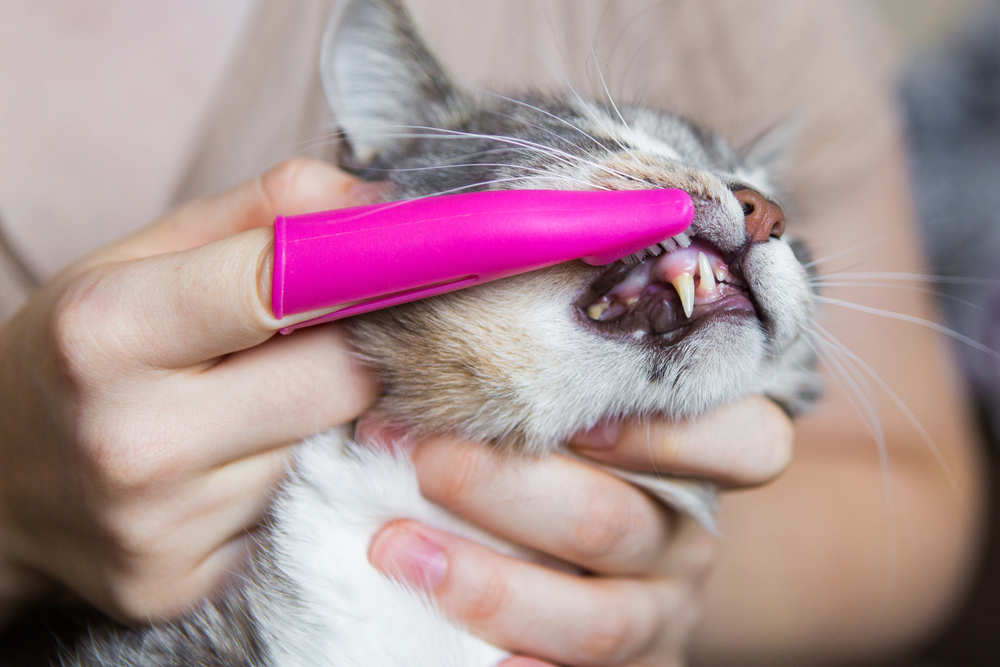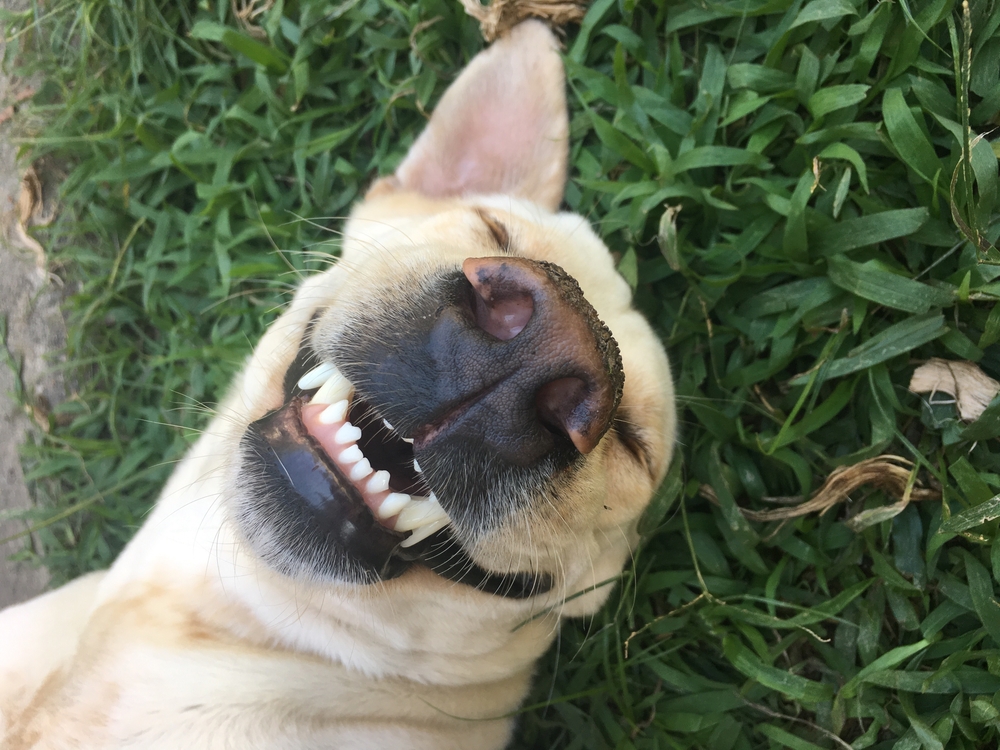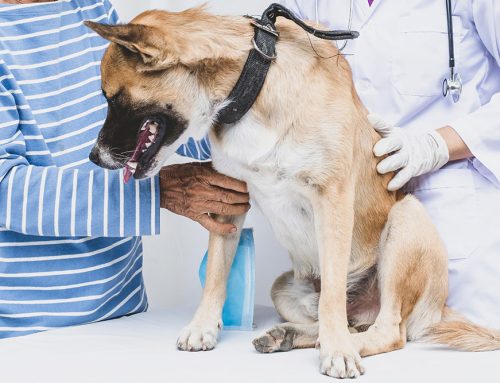The majority of pets have some degree of dental disease by age 3, and oral infections can lead to significant health problems for your pet. Proper dental care is key to your pet’s overall health, so our Adamson Veterinary Services team is raising awareness about pet dental health to ensure your pet’s mouth stays clean and healthy.
Pet periodontal disease is a serious infection
Many people think that their pet’s breath is supposed to smell bad, but a stinky mouth may indicate your pet has periodontal disease. This term is used to describe the infection and associated inflammation that affect the tissues surrounding the tooth. The thousands of bacteria that populate your pet’s mouth form an invisible biofilm called plaque on the tooth’s surface. While your pet’s tongue and chewing habits naturally remove some plaque from the teeth, the plaque that remains thickens and mineralizes to form tartar. This rough, gritty material attracts more bacteria and plaque and, if left untreated, can progress to periodontal disease in the following stages:
- Stage 1 — Gingivitis is the first stage of periodontal disease. The bacteria cause gum inflammation, but do not damage the supporting tooth structures.
- Stage 2 — The bacteria invade under the gum line, damaging the tissue that supports the teeth. Periodontal disease is characterized as stage two when less than 25% of the supporting structures are affected.
- Stage 3 — Periodontal disease is characterized as stage three when 25% to 50% of the supporting structures are damaged.
- Stage 4 — Periodontal disease is characterized as stage four when greater than 50% of the supporting structures are affected. Typically, stage four teeth aren’t salvageable and must be extracted.
Pet periodontal disease causes significant health complications
Left untreated, periodontal disease can cause your pet serious health problems, including:
- Swollen, bleeding gums — Gingivitis causes inflammation to your pet’s gums, resulting in swelling and bleeding, which can be extremely uncomfortable.
- Loose and missing teeth — When the tooth’s supporting structures are damaged, integrity is lost, the tooth loosens, and eating becomes painful for your pet. As damage progresses, the tooth can be lost, leaving an empty, sensitive socket.
- Chronic sinusitis — If the bacteria invade the roof of your pet’s mouth, a communication between their oral and nasal cavities may result, causing chronic sinusitis.
- Tooth root abscess — When bacteria attack the tooth root, abscessation can occur, typically resulting in a painful swelling and leaving your pet’s face looking malformed.
- Eye abnormalities — Your pet’s tooth roots are close to their eyes, and inflammation in this area can lead to abnormalities, such as draining eyes, eye infections, and potentially blindness.
- Cancer — Human studies link chronic periodontal disease to oral cancer, and an association is likely in pets.
- Organ damage — Periodontal disease bacteria can enter your pet’s bloodstream, causing systemic infection and damaging organs, particularly the heart, kidneys, and liver.
Pet periodontal disease can go undetected
Pets frequently hide discomfort and illness, and most owners don’t spend time looking in their pet’s mouth, which can make periodontal disease detection difficult. In addition to bad breath, signs that may indicate periodontal disease include:
- Excessive drooling
- Reluctance to eat or play with chew toys
- Turning their head to one side when eating
- Swelling under the eye
- Ocular or nasal drainage
- Chronic sneezing
- Behavioral changes (e.g., aggression or withdrawal)
In many cases, no signs are apparent, and the condition is not identified until your pet’s mouth is thoroughly examined by a veterinary professional.
Pet periodontal disease can be prevented

Pet periodontal disease can be prevented by removing the bacteria from under your pet’s gum line and plaque and tartar from their teeth. Steps include:
- Scheduling a professional veterinary dental cleaning — Most pets need a professional veterinary dental cleaning about once a year, but some pets, including senior pets, small-breed dogs, and brachycephalic pets, may need more frequent cleaning. These procedures allow our veterinary professionals to thoroughly evaluate your pet’s oral health, remove harmful bacteria, and address any dental complications. General anesthesia is necessary to keep your pet safe and prevent a stressful experience. Dental X-rays are also needed to adequately evaluate your pet’s dental condition, so we can provide the best possible care.
- Brushing your pet’s teeth — Between professional veterinary dental cleanings, daily toothbrushing best promotes your pet’s oral hygiene. Plaque can accumulate shortly after a dental cleaning and, if not removed, can progress to periodontal disease. Use a small, soft bristled toothbrush or a finger brush, and pet-specific toothpaste, since human dental products can be dangerous for pets.
- Providing dental treats — Dental treats approved by the Veterinary Oral Health Council (VOHC) also can help remove plaque and tartar from your pet’s teeth. Ensure you don’t offer exceptionally hard treats, such as bones, hooves, and antlers, that can fracture teeth.
- Feeding a dental prescription diet — Dental prescription diets contain not only kibble formulated to help remove plaque and tartar from your pet’s teeth, but also additives that help prevent plaque from hardening into tartar. Ask our veterinary team if a dental diet is appropriate for your pet.
Our Adamson Veterinary Services team wants to help you prevent periodontal disease in your pet. Contact us today to schedule a professional veterinary dental cleaning.







Leave A Comment